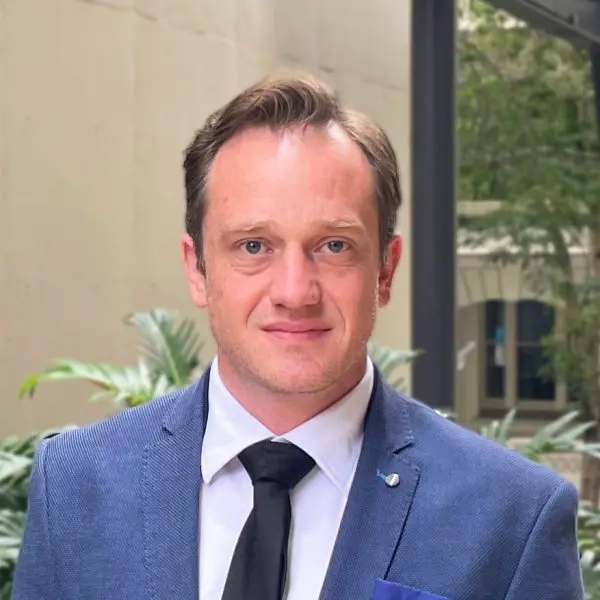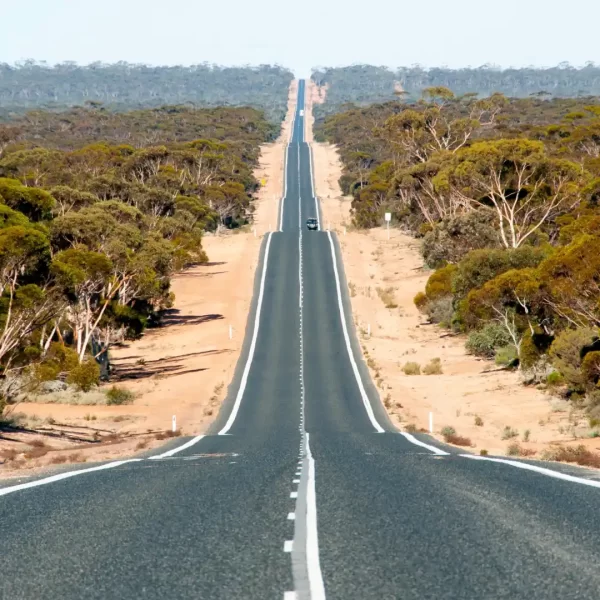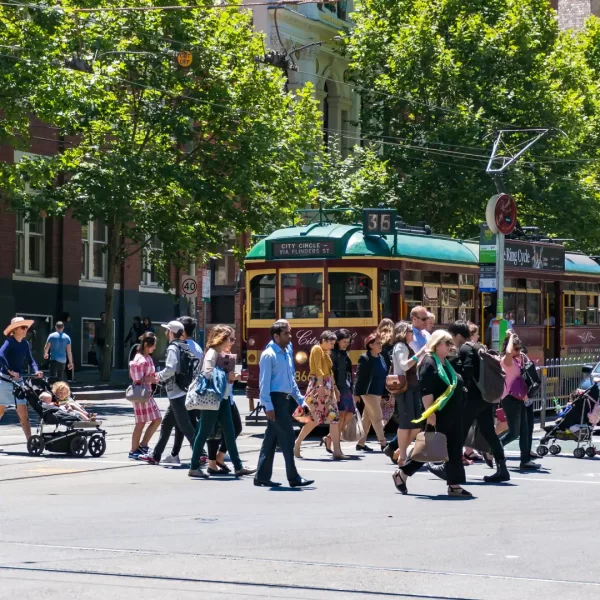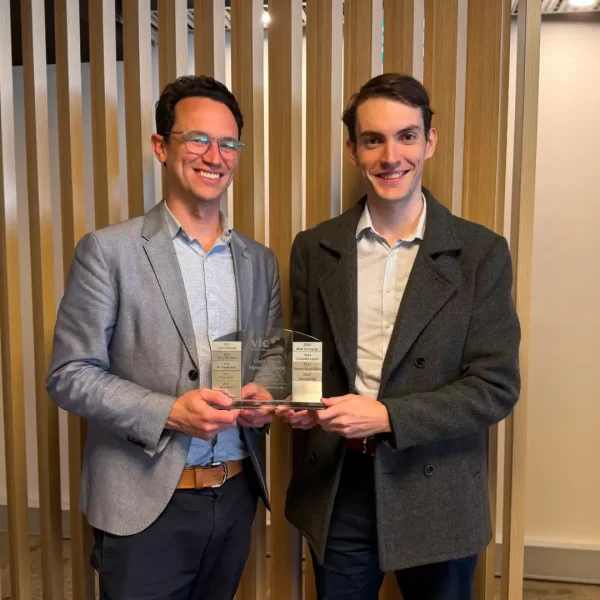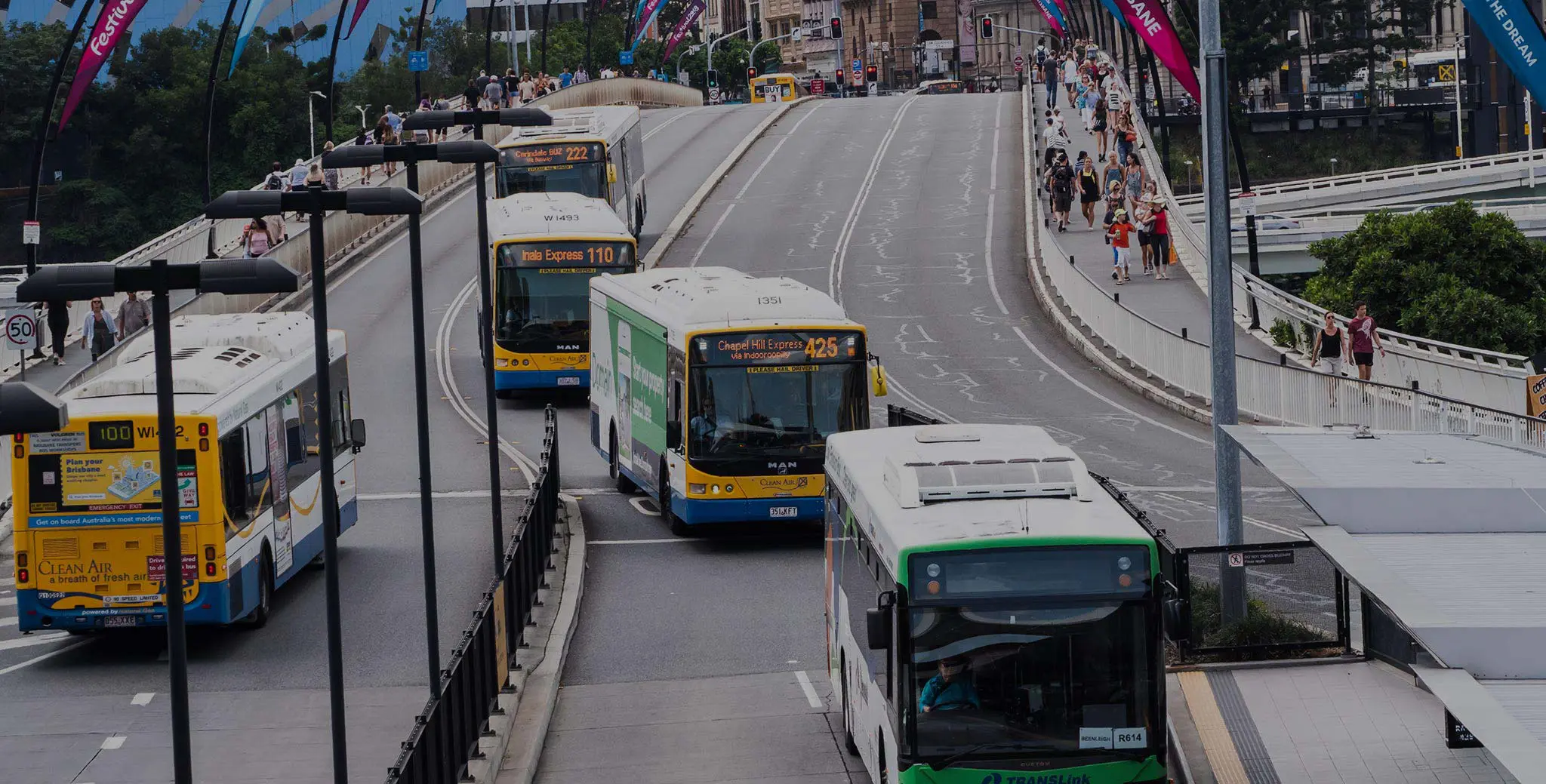
What could happen if public transport was free in SEQ? An exploratory modelling exercise
31 May 2024
Written by
Queensland’s announcement of 50c public transport fares reminded us of a recent modelling exercise where we took this policy one step further and asked: what would happen if PT was free in South East Queensland?
From Monday 5 August for six months, public transport fares will be reduced to a 50-cent flat rate across all zones and modes on the Translink network across Queensland. This includes bus, train (excluding Airtrain, which instead will have 50% off ticket prices for the duration of the trial), ferry, tram and on demand services in South East Queensland, and all regional buses.
Coincidentally, one of our new graduates recently investigated a similar question – ‘what would happen if PT travel was free in SEQ?’ – to get some broader experience using our Zenith model and its outputs. The results of this thought experiment included PT demand mode share, road network performance, determining additional services to meet demand and assessing its potential economic impacts.
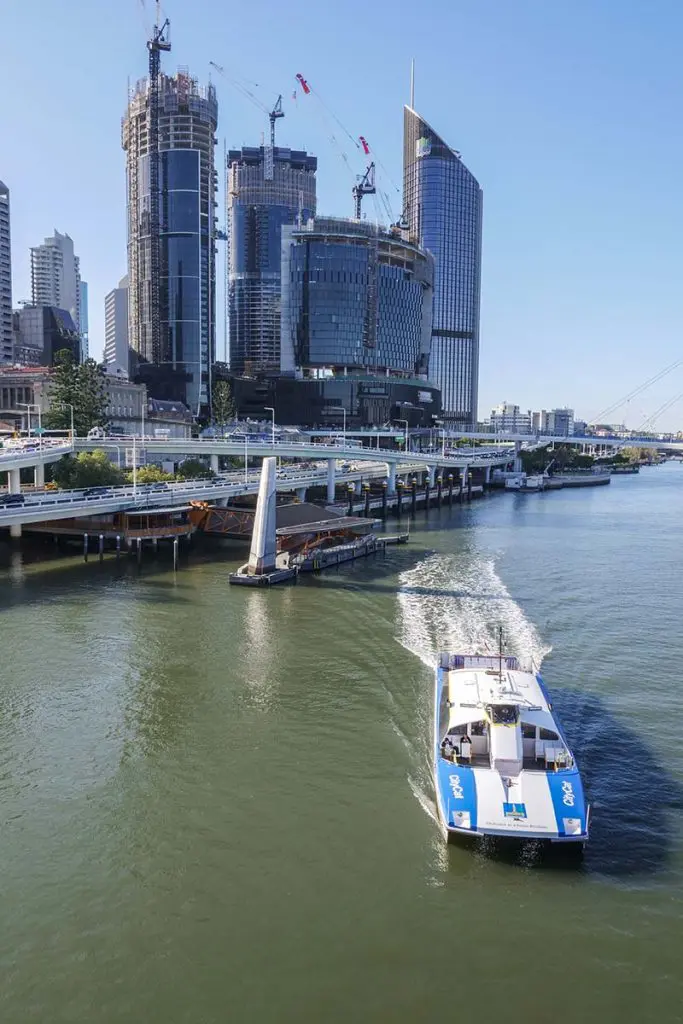
So, in light of the Queensland Government’s recent announcement, we thought we’d share the results from our graduate’s brief explorations into an idea that, in a less extreme guise, will soon come to life in the Sunshine State (with the caveat that, with more time and context, this research could achieve results more directly relevant to the upcoming 50c fare trial).
Method
The base case for our study was the 2021 SEQ Zenith model, which includes feedback of public transport crowding levels into travel demand. The project case was a duplicate of the base case, with the following adjustments made:
- All PT fare tables (all modes, all times, all zones) were set to zero.
- A scenario was run without the crowding feedback included to gauge PT ‘unconstrained’ demands.
The results, therefore, reflect a hypothetical case from 2021 rather than a forecast view.
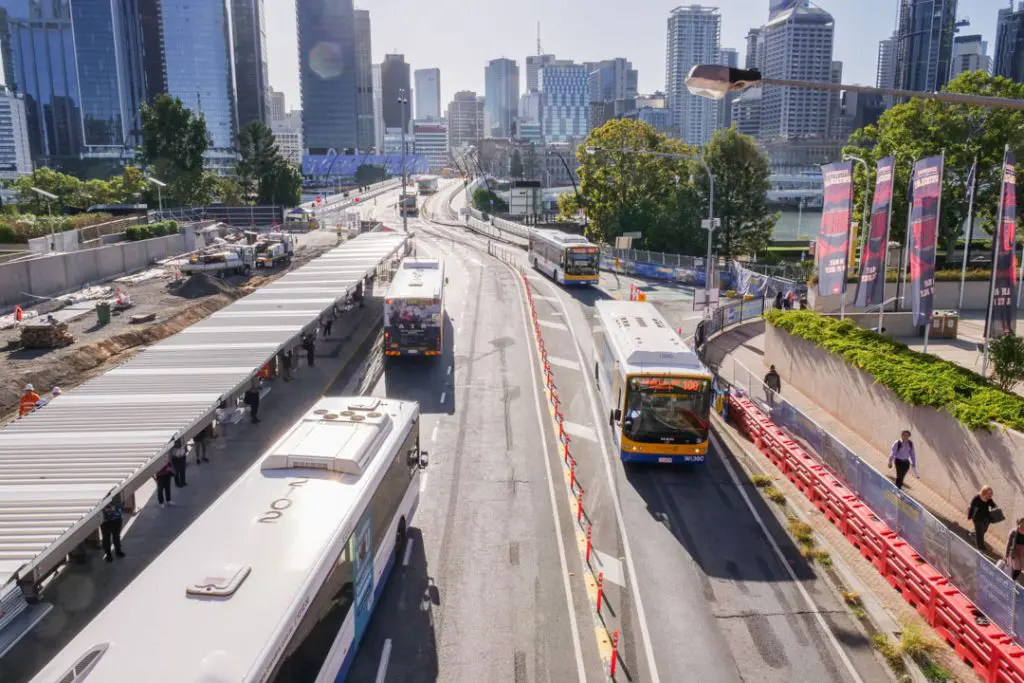
Mode share and trip volume results were derived from the model KPIs script, while commute mode share was obtained by summing relevant matrix tables in EMME. Transit line capacities and PT volumes were analysed in Excel, and road performance figures were extracted and examined in Excel. Economic benefits, meanwhile, were calculated using VLC’s CBA (cost-benefit analysis) scripts.
Findings
The effect of free fares was most significant on commuting trips, with approximately a 19% increase in daily PT boardings, with these trips diverted from car, walk, and cycle.
Interestingly, but intuitively, Airtrain services, which has higher fares than standard TransLink Services, saw boardings increase by a factor of five. However, it should be noted that this point from our research is not relevant to the upcoming fare reduction trial, which covers the Airtrain service to Brisbane’s domestic and international airports.
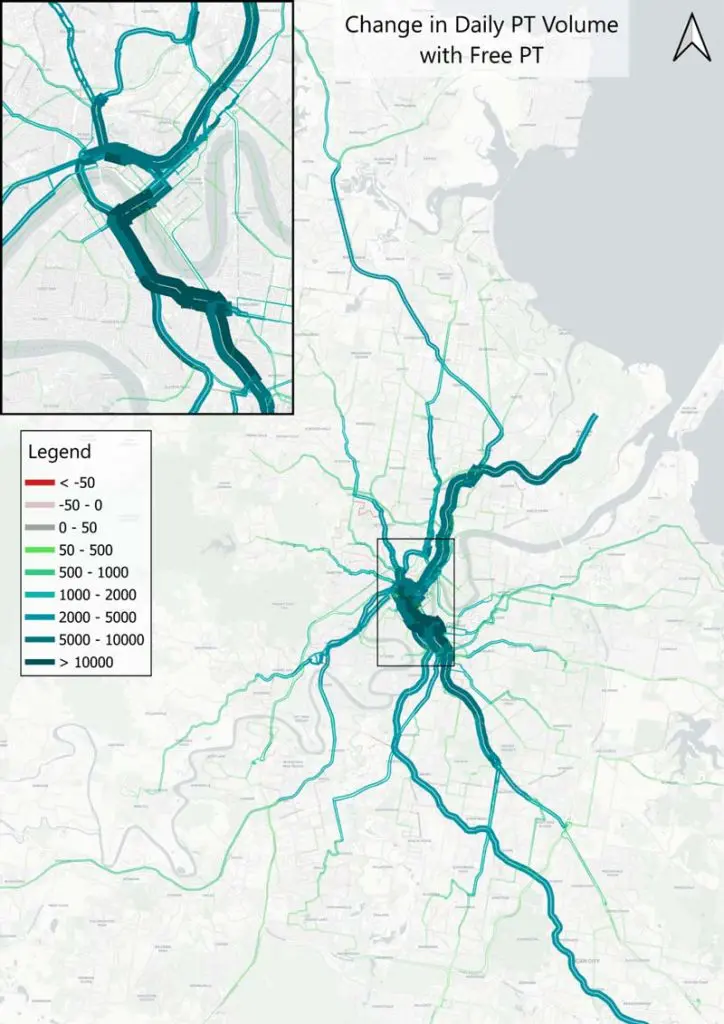
Even incorporating feedback from crowding level to demand, the model still forecasts a range of services where demand would exceed in-vehicle capacities. Overcapacity services in SEQ increased significantly under free fares, with 140 more services forecast to have demand above their assumed capacity, particularly on the Gold Coast/Airport train line.
Bus services running from the city to the outer suburbs saw the most overcapacity issues. To meet the increased demand, service frequency was adjusted to maintain a VC ratio below 0.9, resulting in a calculated total annual service km increase of approximately 3,300,000 km. This increase translates to an estimated annual cost of $18 million, or $27 million if services are kept below 80% of total capacity.
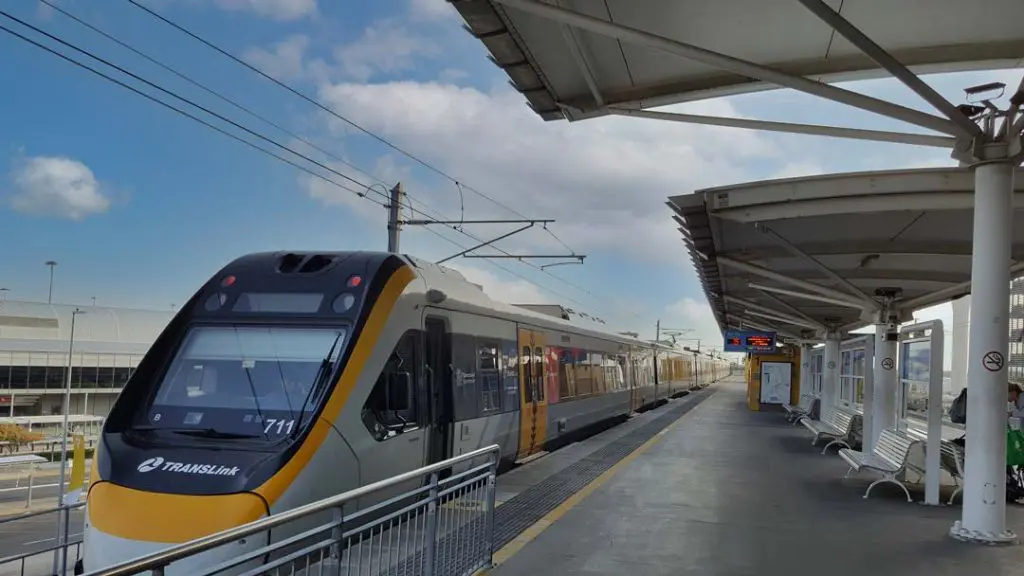
Road Network Performance
With free PT Fares, excessive traffic delay network-wide decreased by 8.4% and 9.1% in the AM and PM peak periods, respectively. Marginal improvements to road performance were observed in the inter-peak and nighttime periods. Interestingly, increased traffic volumes were forecast in the counter-peak direction, possibly due to free PT incentivising people to drive in the counter-peak direction to access inbound services. We didn’t look at how trip distribution changed as part of this experiment.
Conclusion
Beyond its function as a fascinating modelling experiment, the exercise has suggested that implementing free public transport in SEQ could offer benefits such as improved affordability and uptake of access to jobs and services by public transport, in addition to reduced traffic delays. Completely free ticketing would also save on ticketing and compliance costs. Against this would be some additional capital and operating costs (of new buses, fuel and drivers) of new services and the loss of farebox revenue.
With 50-cent fares imminent for Queensland, the above results provide an interesting, albeit high-level insight into the possible effects these kinds of policy changes can have on mode choice, road network performance and more. However, we won’t have to wait long to find out, and it’s at this point that we will have more definitive answers to this fascinating question.
Written by: Flynn Pearman, Mark Iliffe
